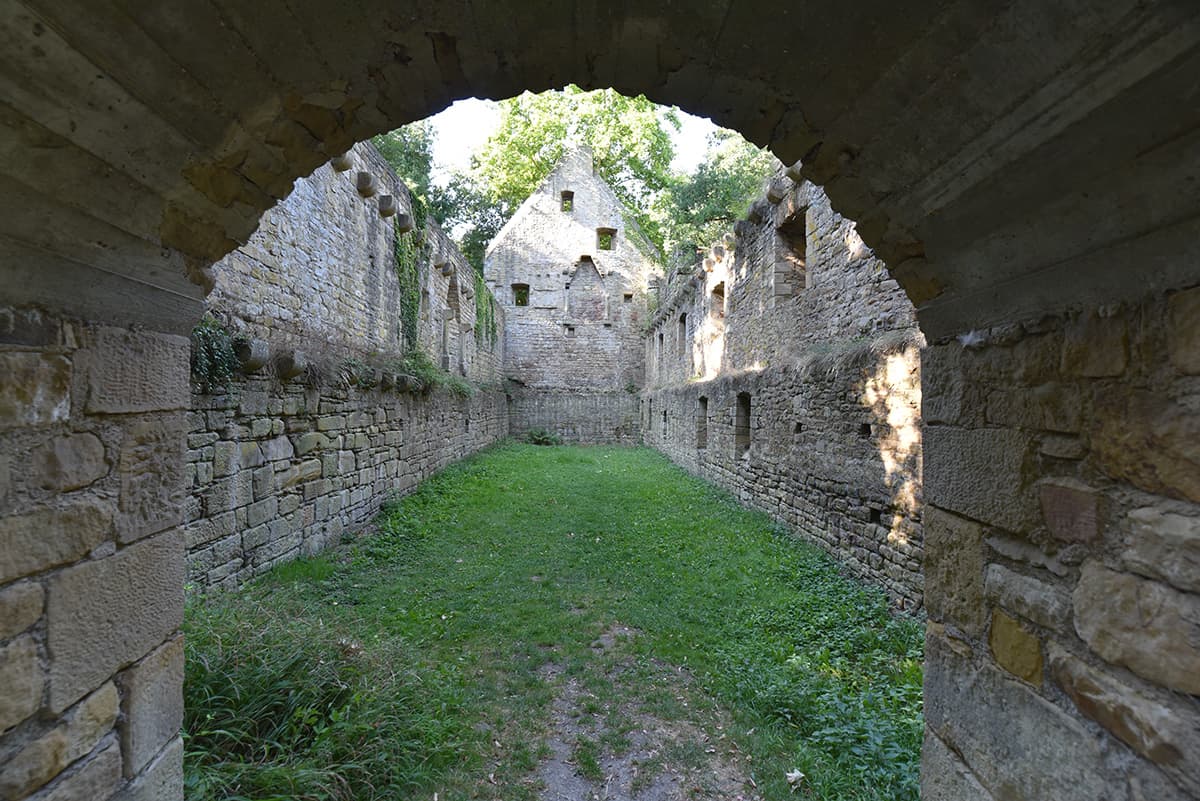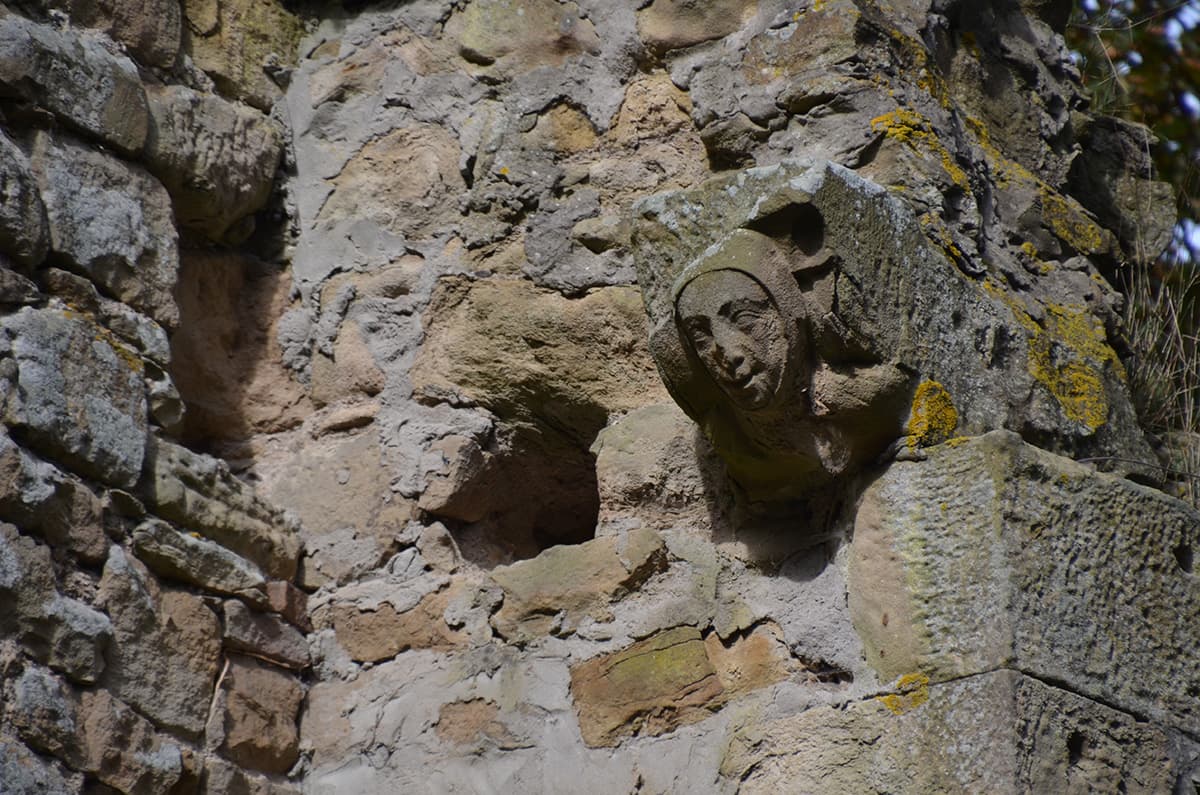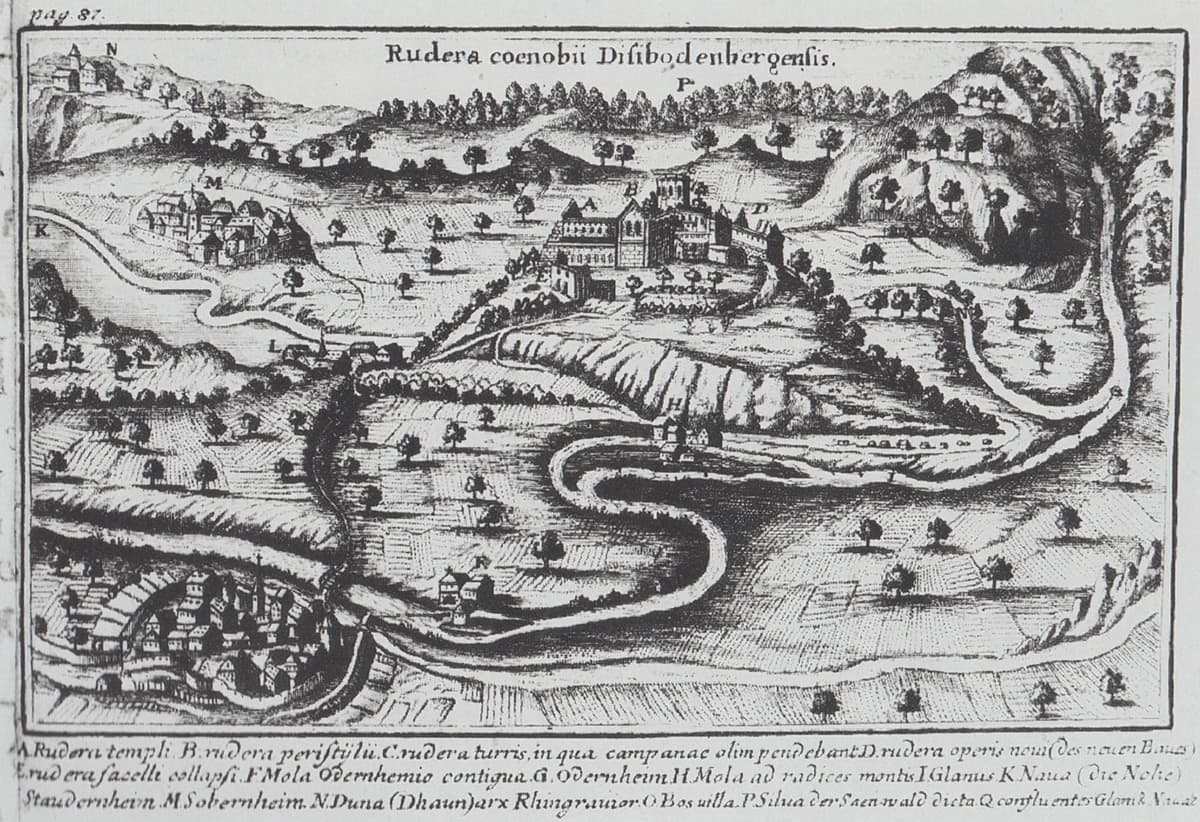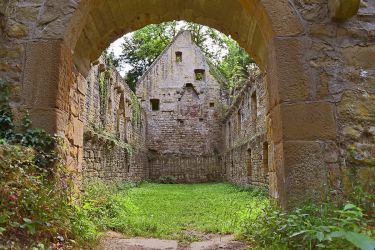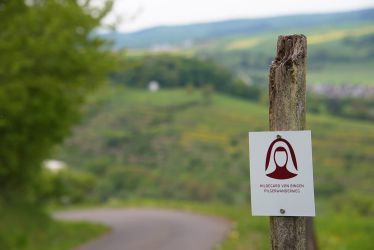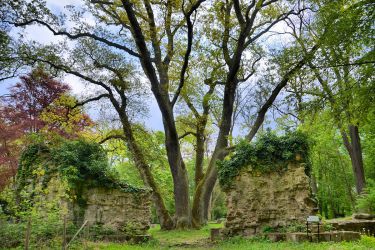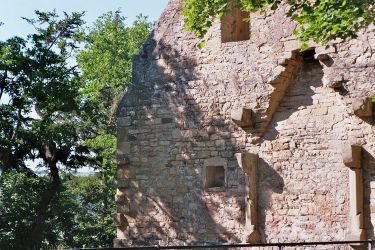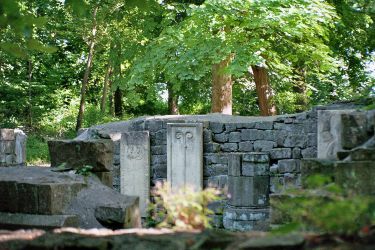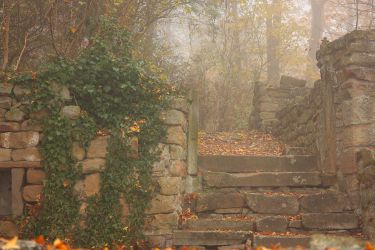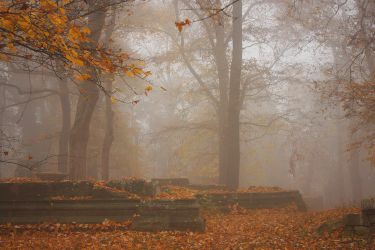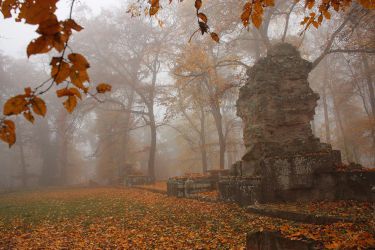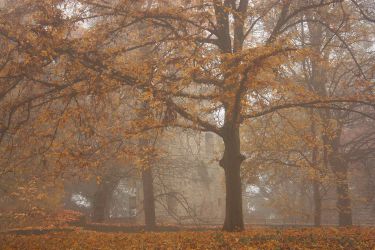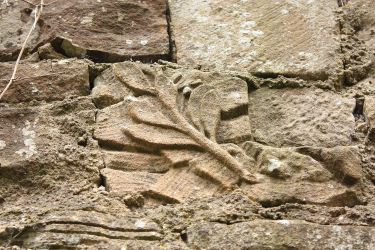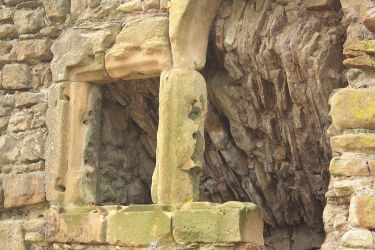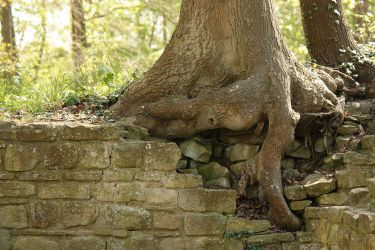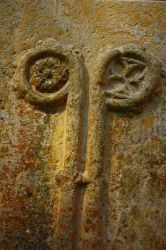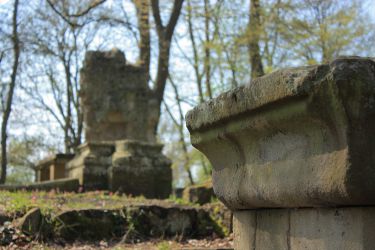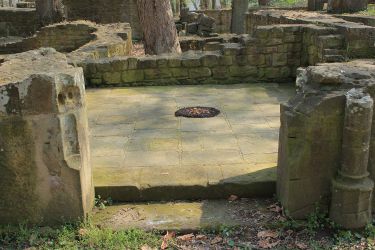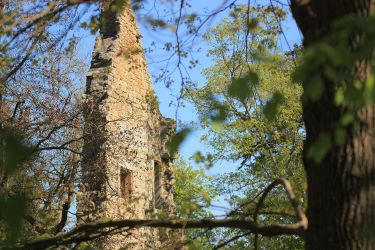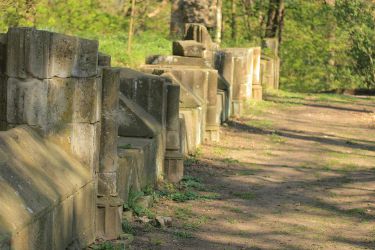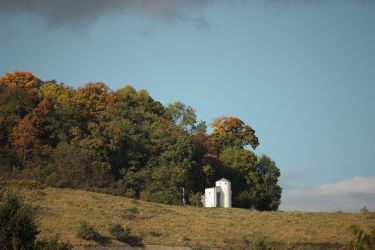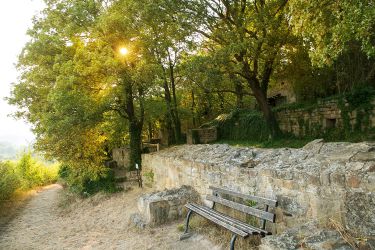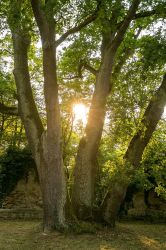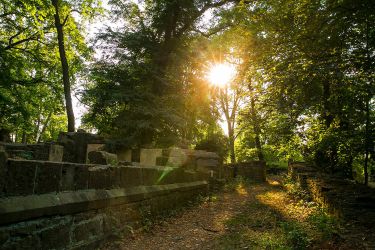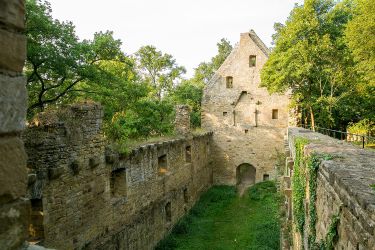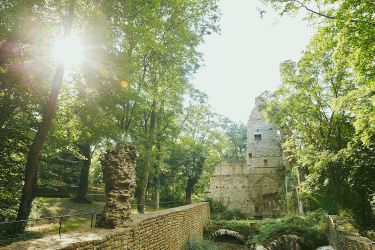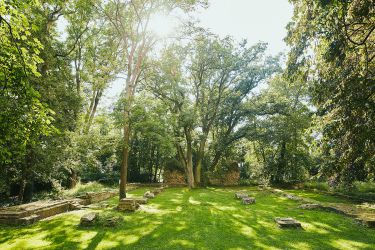The Disibodenberg lies at the mouth of the Glan into the Nahe, visible from afar. There was probably already a sanctuary on its saddle-like plain in Celtic times, which, as is so often the case, was taken over and enlarged by the Romans. Around 640 AD, an Iro-Scottish wandering monk named Disibod settled on the mountain as a hermit, according to legend guided by a vision. His reputation as a saint and his miraculous deeds attracted more and more people to the mountain, who organized themselves into a small community and founded the first monastery. From the mountain, which was later named after the hermit, Christianity spread throughout the Nahe region. After Disibod's death around 700, his grave continued to attract pilgrims, so that the first small church was built there around fifty years later.
Detail of a tracing of the lost book cover of the “Vita sancti Disibodi” written by Hildegard of Bingen in 1170. It shows the presumed appearance of the likewise lost marble sarcophagus of St. Disibod, which was formerly placed in the choir area of the abbey church (from Acta Sanctorum (Julii II), vol. 29,2. ed. by J. Carnandet. Paris and Rome 1867 (p. 586)
Around the year 1000, twelve Augustinian canons founded a monastery at the instigation of Archbishop Willigis of Mainz, the builder of Mainz Cathedral, which was converted into a Benedictine monastery in around 1100 by Archbishop Ruthard of Mainz. Construction of the monastery complex began in 1108 with the large monastery church, the remains of which can still be seen today. On November 1, 1112, three young women, including twenty-year-old Jutta von Sponheim and fourteen-year-old Hildegard, were admitted to the monastery in a new women's hermitage founded for them. Under the first “Magistra”, the now beatified Jutta of Sponheim, and after her death in 1136 under her successor Hildegard, the reputation of the women's monastery, and of the monastery as a whole, grew increasingly on the Disibodenberg. New sisters and brothers, who brought property and power with them, joined the monastery. In 1143, the construction of the monastery church, one of the largest churches between Mainz and Trier, was completed. Hildegard and her fellow sisters left the Disibodenberg to found a new monastery on the Rupertsberg near Bingen in early 1152 at the latest. The reputation of the old monastery on the Disibodenberg suffered greatly as a result. Warlike disputes between the nobility in the Naheland region and the Archbishopric of Mainz added to this and caused the monastery to become completely impoverished and fall into ruin.
In 1259, 12 Cistercians from Otterberg in the Palatinate took over the run-down monastery on the Disibodenberg by order of Archbishop Gerhard of Mainz. After a few years, the monastery began to flourish again and the old buildings were rebuilt to suit the needs of the new monastery lords. Two large buildings, the hospice and the abbey building, which still impress visitors today with their high gables, were added. Large fireplaces in both buildings and the remaining ornate architectural fragments are evidence of the wealthy furnishings of the time.
Hospice building
Head console in a corner of the abbey building
As a result of the Reformation, the monastery was closed in 1559 and occupied for many years during the Thirty Years' War. During the Napoleonic era, the monastery, which was already in a ruinous state, passed into private ownership.
Drawing of the ruins of the Disibodenberg monastery from 1724, when the walls of the individual buildings were still almost completely intact (from G. Stanzl, Die Klosterruine Disibodenberg. Worms 1992, 15 Fig. 5)
From the 18th century, the residents of the surrounding villages, Staudernheim and Odernheim, used the monastery ruins as a quarry. Even today, spolia, i.e. reused stones from the old monastery complex, can be found in the houses of both villages.
In 1840, the then owner Peter Wannemann commissioned the famous Heidelberg horticultural inspector Ludwig Johann Metzger to transform the monastery ruins into a landscaped park modeled on English parks. Some of the “romantic” ruins were redesigned. The Disibodenberg became a popular excursion destination, especially for spa guests from Bad Kreuznach and Bad Münster. In 1954, Countess Ehrengard von Hohenthal inherited the monastery ruins. She and her future husband Hans-Lothar Freiherr von Racknitz were committed to preserving and safeguarding the monastery ruins. In 1989, they established the Disibodenberg Scivias Foundation, to which the ruins were bequeathed. In 1985, extensive archaeological excavations were carried out by the Landesdenkmalpflege Mainz under the direction of Dr. Günter Stanzl. In 1998, to celebrate the 900th birthday of Hildegard of Bingen, the museum on the slope of the Disibodenberg was opened and the newly built Hildegardis Chapel was consecrated.
“The soul is like the wind that blows over the herbs, like the dew that covers the meadows, like the rain air that makes things grow. Likewise, let man pour out benevolence on all who yearn. Let him be a wind that helps the wretched, a dew that comforts the forsaken. Let him be like the rain that lifts the weary and fills them with love like the hungry.”
Hildegard von Bingen, Scivias.


